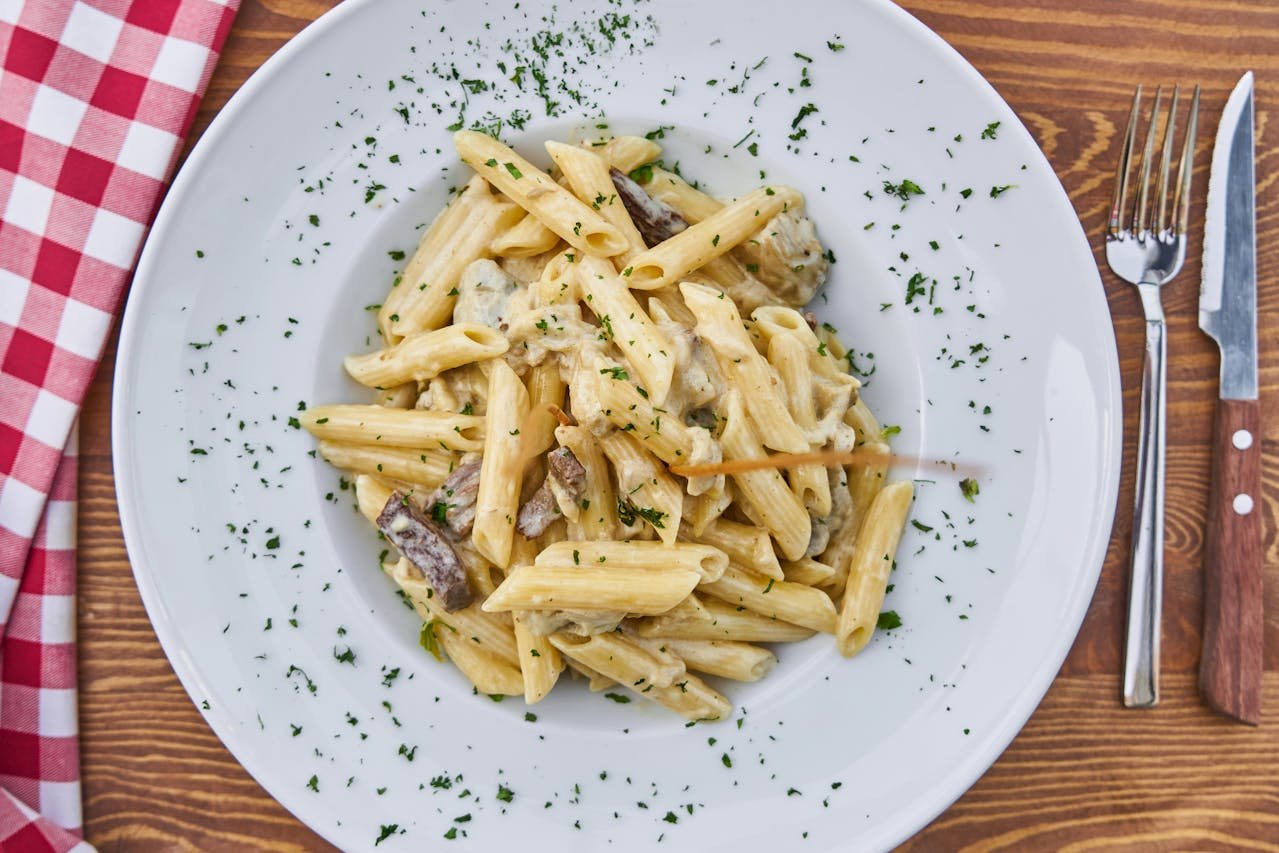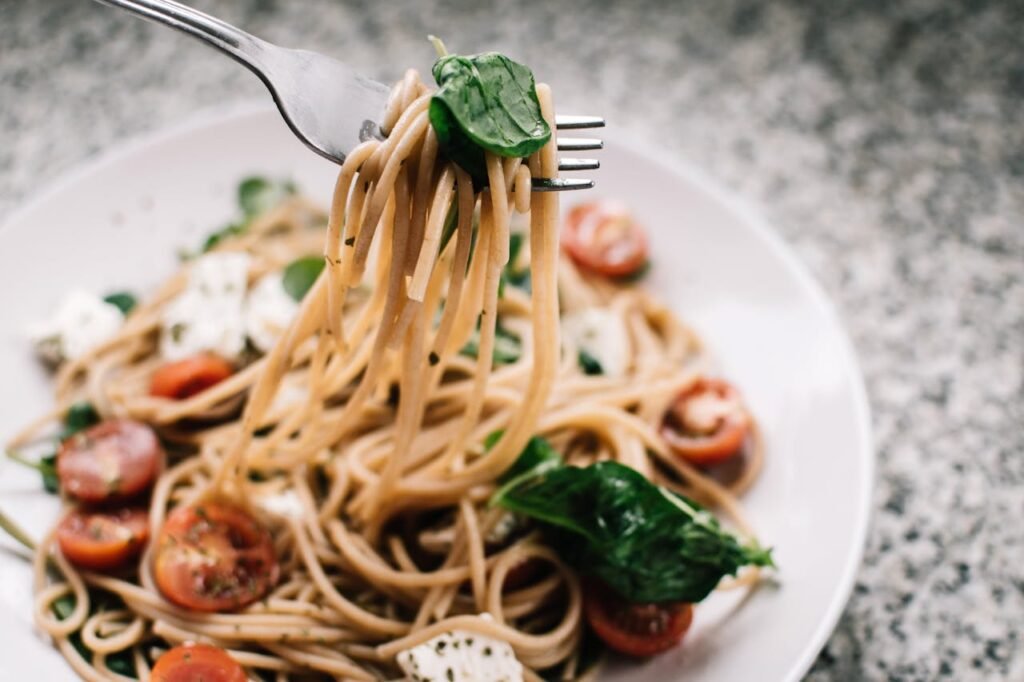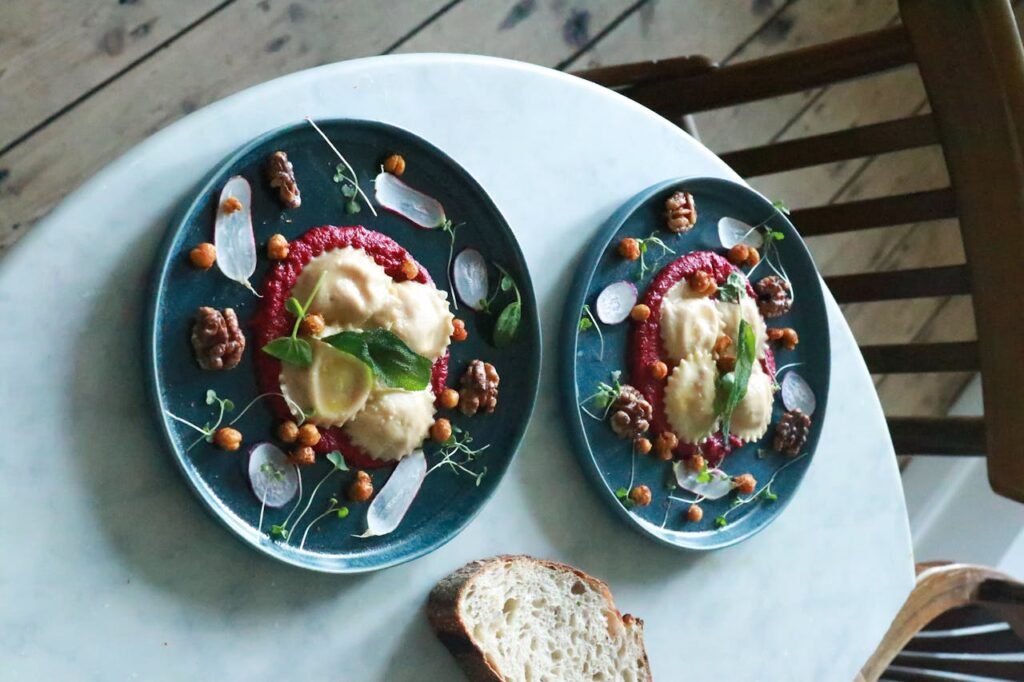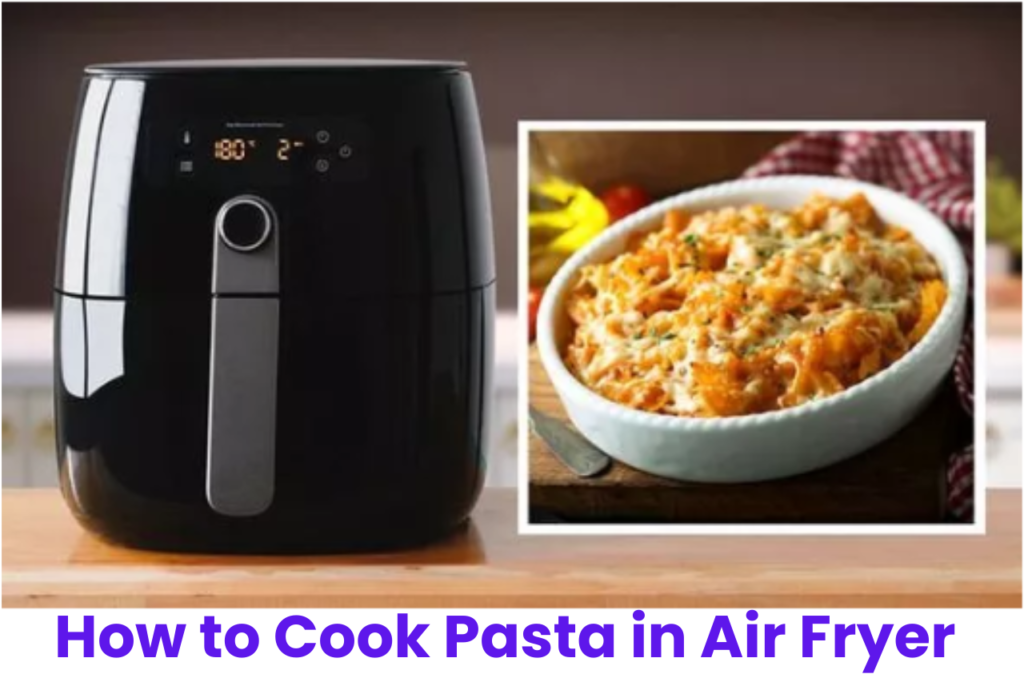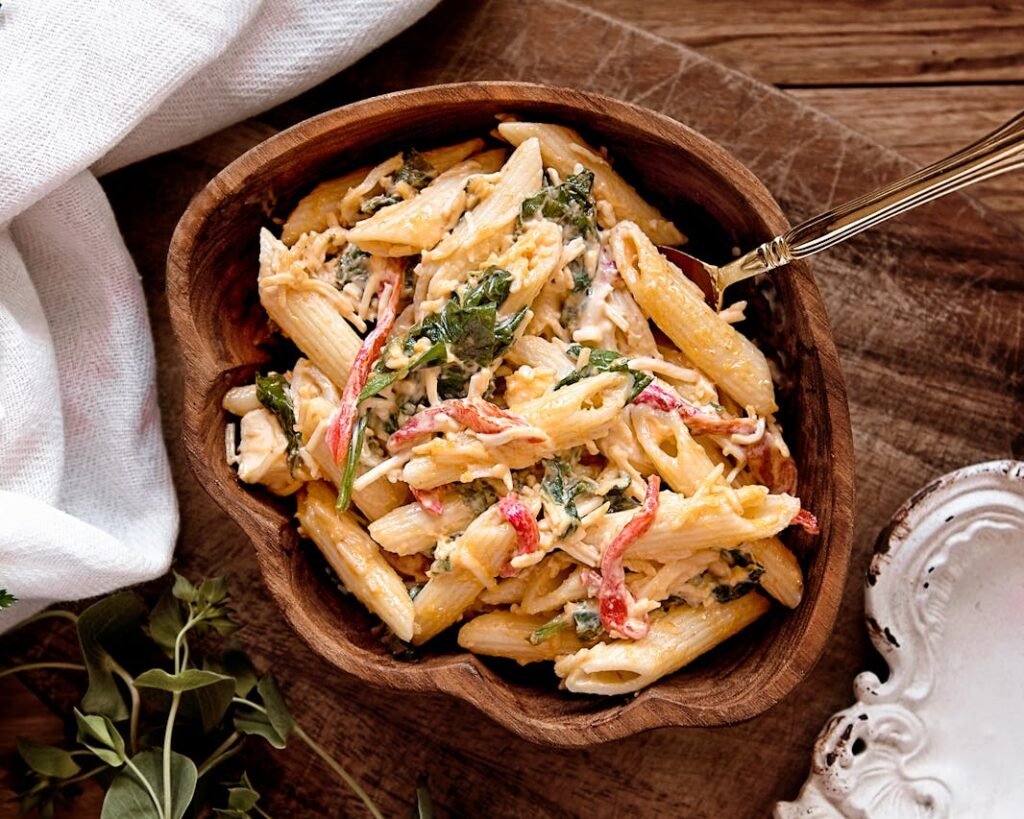Cooking pasta using a pressure cooker can be a distinct advantage for involved individuals seeking a rapid, useful method for preparing a tasty feast. Pressure cookers, similar to the popular Instant Pot, offer a helpful alternative to traditional stovetop cooking. In this guide, we’ll investigate bit by bit instructions on how to cook pasta in a pressure cooker, along with supportive tips and recipe ideas.
Pressure cookers work by creating a sealed environment where steam builds up, raising the boiling point of water. This higher temperature cooks food faster than conventional methods, making it ideal for time-sensitive meals like pasta dishes. Whether you’re a pressure-cooking novice or looking to expand your culinary skills, mastering pasta in a pressure cooker is both simple and rewarding.
Getting Ready: Gather Your Tools
Before you begin cooking pasta in a pressure cooker, it’s important to assemble the necessary tools and ingredients. Here’s what you’ll need:
1. Pressure Cooker:
Ensure you have a reliable pressure cooker like an Instant Pot. Different models may have specific settings for cooking pasta, so refer to your appliance’s manual for guidance.
2. Pasta:
Pick your #1 sort of pasta, like spaghetti, penne, or fusilli. Most standard pasta shapes work well in a pressure cooker.
3. Water or Broth:
Use water or broth for cooking the pasta. How much fluid required will rely upon the sort and amount of pasta you’re using.
4. Salt and Seasonings:
Add salt to enhance the pasta’s flavor and prevent it from sticking. You can likewise include seasonings like garlic powder, onion powder, or dried spices for additional character.
5. Sauce and Ingredients (Optional):
Set up any sauce or extra ingredients you intend to use with the cooked pasta, for example, marinara sauce, pesto, or vegetables.
6. Accessories:
Consider using accessories like a trivet or steamer basket to elevate the pasta above the cooking liquid, preventing it from sticking to the bottom of the pot.
By gathering these essential tools and ingredients, you’ll be well-prepared to cook perfect pasta in your pressure cooker.
Step-by-Step Instructions: Cooking Pasta in a Pressure Cooker
Cooking pasta in a pressure cooker is a useful and compelling methodology that yields faultlessly cooked pasta in a negligible portion of the time contrasted with customary stovetop procedures.
Follow these detailed steps to achieve excellent results:
1. Measure and Add Pasta:
Begin by measuring the desired amount of pasta. For reference, a standard serving size is typically around 2 ounces (about 1 cup) of dried pasta per person. Add the pasta to the pressure cooker pot.
2. Add Water or Broth:
Pour enough water or broth into the pressure cooker to fully cover the pasta. The general rule of thumb is to use a ratio of 1 part pasta to 2 parts water. For example, if you’re cooking 8 ounces of pasta, use 16 ounces (2 cups) of water.
3. Season the Water:
Season the water with salt to enhance the pasta’s flavor. Use approximately 1 teaspoon of salt per 4 cups of water. You can also add a drizzle of olive oil to prevent the pasta from sticking together.
4. Optional: Add Sauce or Ingredients:
If you prefer to cook the pasta with sauce or additional ingredients, add them to the pressure cooker at this stage. Ensure the sauce is well-distributed but avoid stirring the pasta directly.
5. Set Pressure Cooker Settings:
Close the lid of the pressure cooker securely and set the cooking time according to the type of pasta being used. Refer to the manufacturer’s instructions for recommended cooking times.
6. Start Cooking:
Start the pressure cooker and allow it to come to pressure. The cooking process will begin once the pressure has built up inside the cooker.
7. Natural Release or Quick Release:
Once the cooking time is complete, you can choose between natural release or quick release methods to release the pressure. Natural release involves letting the pressure release naturally, while quick release requires manually releasing the pressure using the valve.
8. Check and Serve:
Carefully open the lid once the pressure has fully released. Use a fork or tongs to check the doneness of the pasta. If the pasta is cooked to your liking, serve immediately with your favorite toppings or sauces.
By following these step-by-step instructions, you’ll be able to prepare delicious pasta dishes using a pressure cooker in no time.
Tips and Tricks for Cooking Pasta in a Pressure Cooker
Cooking pasta in a pressure cooker can yield fantastic results, but there are several tips and tricks to ensure your pasta turns out perfectly every time. Follow these guidelines to master the art of pressure cooker pasta:
1. Use the Right Amount of Water:
It’s crucial to use the correct ratio of water to pasta when cooking in a pressure cooker. Typically, you’ll want to use enough water to fully submerge the pasta, ensuring it cooks evenly.
2. Season the Water Properly:
Adding salt to the cooking water not only flavors the pasta but also enhances its texture. Use about 1 teaspoon of salt per 4 cups of water for optimal seasoning.
3. Avoid Overcooking:
Pressure cookers cook food quickly, so it’s essential to monitor the cooking time closely. Overcooking pasta can result in mushy or sticky noodles.
4. Embrace One-Pot Meals:
Take advantage of the pressure cooker’s versatility by preparing complete pasta meals in one pot. You can add vegetables, proteins, and sauces directly to the pot for a convenient and flavorful dish.
5. Adjust Cooking Times Based on Pasta Type:
Different pasta shapes and types may require varying cooking times. Refer to the pressure cooker’s manual for recommended cooking times based on the pasta you’re using.
6. Prevent Foaming and Starch Buildup:
To minimize foaming and prevent starch buildup during cooking, add a small amount of olive oil to the cooking water. This helps keep the pasta from sticking together.
7. Consider Quick Release for Al Dente Pasta:
For perfectly al dente pasta, use the quick release method to stop the cooking process immediately after the recommended cooking time. This helps prevent overcooking.
8. Experiment with Flavors:
Get creative with your pasta dishes by experimenting with different herbs, spices, and sauces. Pressure cooking infuses flavors into the pasta, creating rich and tasty meals.
9. Stir Carefully After Cooking:
Once the pasta is cooked, stir gently to combine any added ingredients without breaking the noodles. This ensures even distribution of flavors throughout the dish.
10. Use High-Quality Ingredients:
The quality of your ingredients will impact the final taste of your pasta dish. Choose fresh and flavorful ingredients to elevate your pressure cooker pasta.
Benefits of Cooking Pasta in a Pressure Cooker
Cooking pasta in a pressure cooker offers numerous benefits that make it an attractive method for preparing this classic dish. Here are some advantages of using a pressure cooker to make pasta:
1. Time Efficiency:
One of the most significant advantages of cooking pasta in a pressure cooker is the time savings. Pressure cookers can significantly reduce cooking times compared to traditional stovetop methods, making it ideal for busy weeknights or quick meals.
2. Energy Efficiency:
Pressure cookers use less energy compared to boiling water on the stove, making them an environmentally friendly option for cooking pasta. The sealed environment of a pressure cooker retains heat efficiently, reducing overall cooking time and energy consumption.
3. Retains Nutrients:
Pressure cooking preserves more nutrients in the food compared to boiling or other cooking methods that involve prolonged exposure to heat. This is particularly beneficial for pasta dishes that include vegetables or other ingredients that can lose nutrients through overcooking.
4. One-Pot Convenience:
With a pressure cooker, you can cook pasta and its accompanying ingredients all in one pot, minimizing cleanup and streamlining meal preparation. This convenience is especially appealing for those seeking simple and efficient cooking methods.
5. Enhanced Flavor Infusion:
Pressure cooking allows for deep flavor infusion, as the high-pressure environment forces flavors into the pasta and accompanying ingredients. This results in rich, flavorful pasta dishes with minimal effort.
6. Tender and Consistent Results:
Pressure cooking pasta yields consistently tender and evenly cooked noodles. The controlled environment inside the pressure cooker ensures that each piece of pasta cooks uniformly, reducing the risk of undercooked or overcooked sections.
7. Versatility in Cooking:
In addition to cooking pasta, pressure cookers can be used for a variety of other cooking tasks, such as making soups, stews, rice dishes, and desserts. This versatility makes pressure cookers a valuable addition to any kitchen.
8. Easy Cleanup:
Cooking pasta in a pressure cooker results in fewer pots and pans to clean, as everything is cooked in one pot. This simplifies the cleanup process and reduces the amount of time spent washing dishes.
9. Consistent Al Dente Texture:
Pressure cooking pasta allows for precise control over the cooking time, resulting in perfectly al dente pasta with just the right amount of bite. This texture is difficult to achieve consistently with other cooking methods.
10. Safe and User-Friendly:
Modern pressure cookers are equipped with safety features that make them easy to use and minimize the risk of accidents. With proper usage and adherence to safety guidelines, pressure cooking is a safe and efficient cooking method.
Conclusion: How to Make Pasta In a Pressure Cooker
Cooking pasta in a pressure cooker is a game-changer for occupied individuals who want speedy, delightful meals.This handy tool makes it easy to cook pasta perfectly with little effort. By following these means, you can make various pasta dishes, from classic spaghetti to creamy mac and cheddar, in substantially less time.
Have a go at using your pressure cooker with various pasta shapes, sauces, and ingredients. Adjust the cooking times based on the pasta type and how you like it cooked. Go ahead and tweak recipes to match your tastes.
With an impeccably measured extent of practice, you’ll get the hang of cooking pasta in a pressure cooker. Partake in the accommodation, speed, and tasty outcomes it brings. Whether cooking for yourself, your family, or visitors, your pressure cooker will turn into your favorite kitchen tool for making great pasta dishes.
Happy cooking!
Read more: How to Cook Pappardelle Pasta
FAQ
Use approximately 1 to 1.5 cups of water per 8 ounces of pasta in the pressure cooker. The water should be enough to cover the pasta but not excessively.
Yes, there are numerous tutorials on YouTube demonstrating how to cook pasta in a pressure cooker. Search for “pressure cooker pasta recipes” or specific pasta dishes to find helpful videos.
Yes, you can substitute part of the water with pasta sauce or broth for added flavor. Ensure there is enough liquid to create steam and cook the pasta effectively.
Yes, it’s crucial to add liquid such as water, broth, or sauce when cooking pasta in a pressure cooker. Sufficient liquid is needed to create steam and maintain pressure for cooking.

